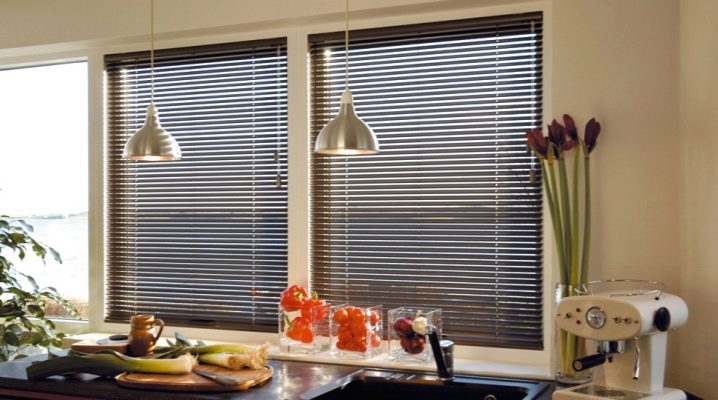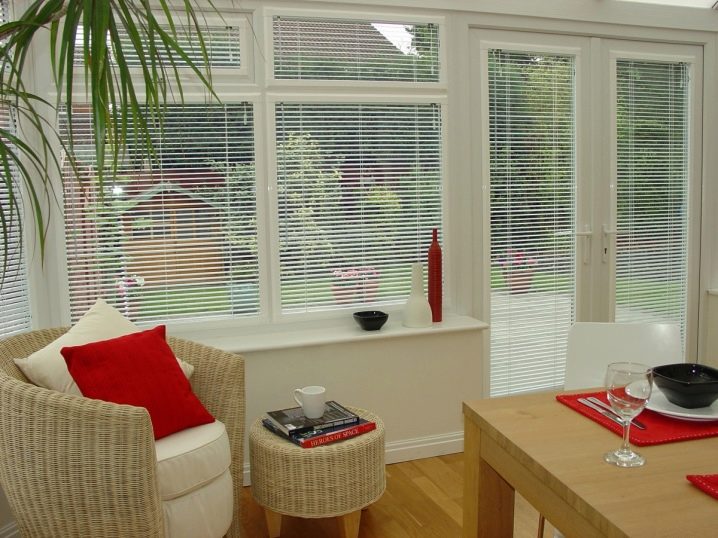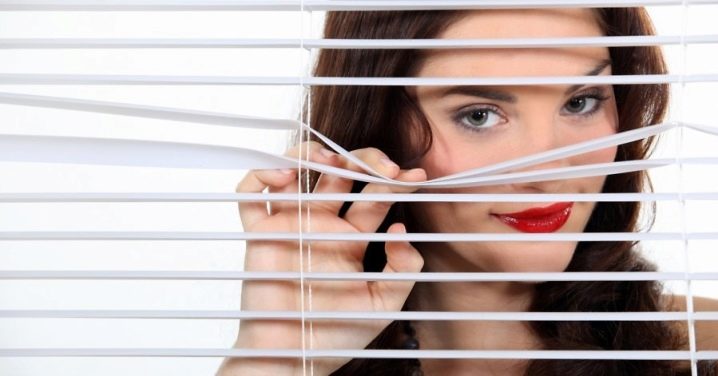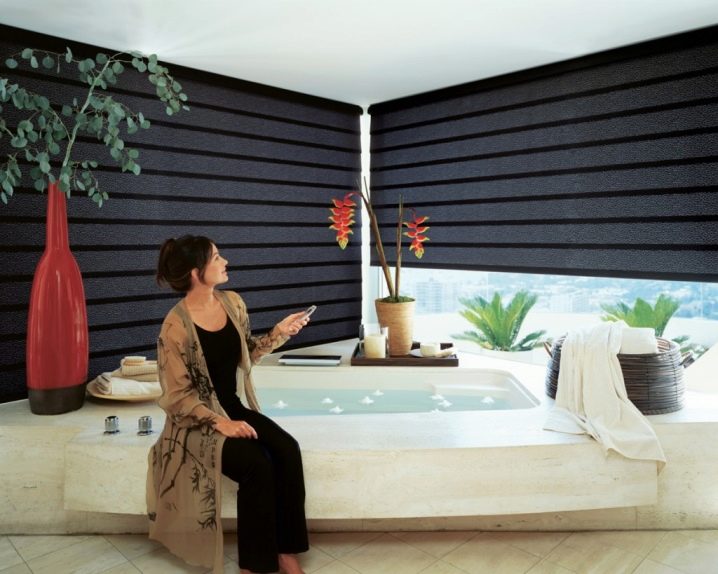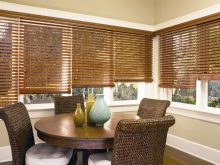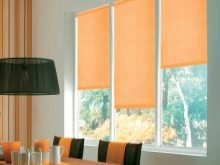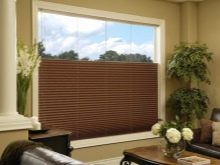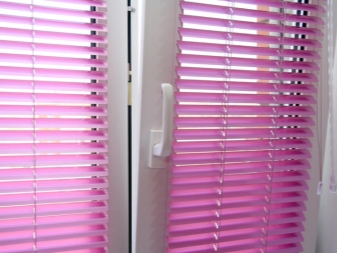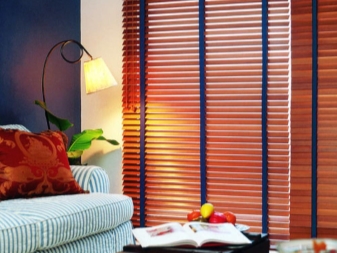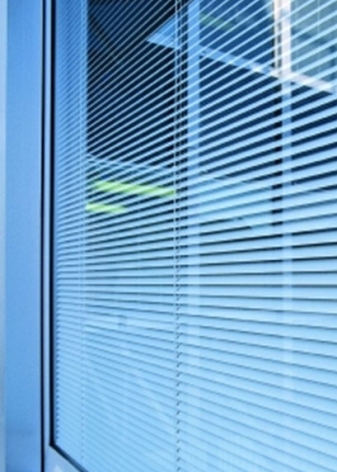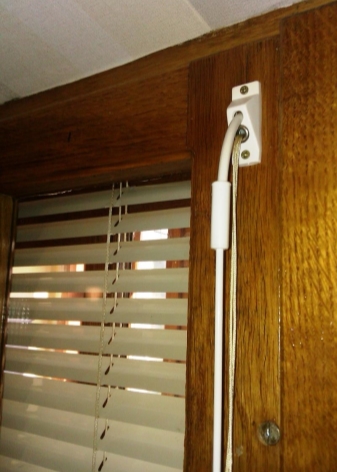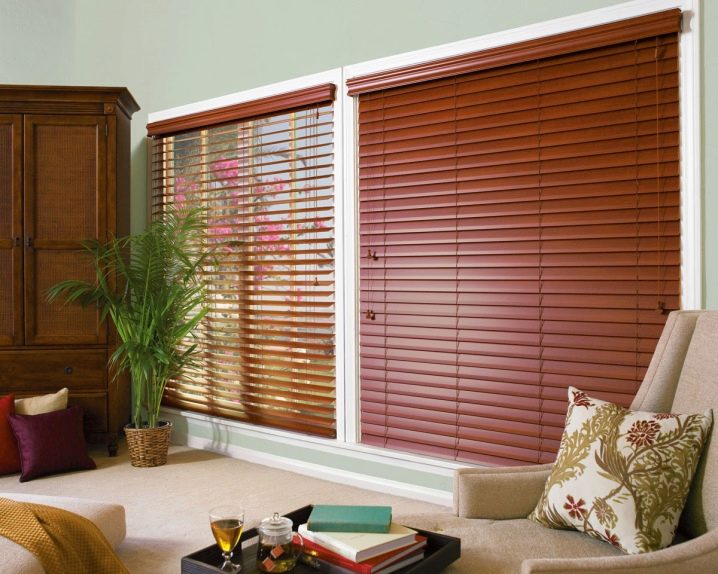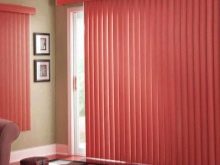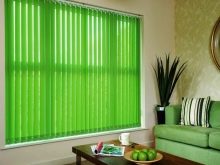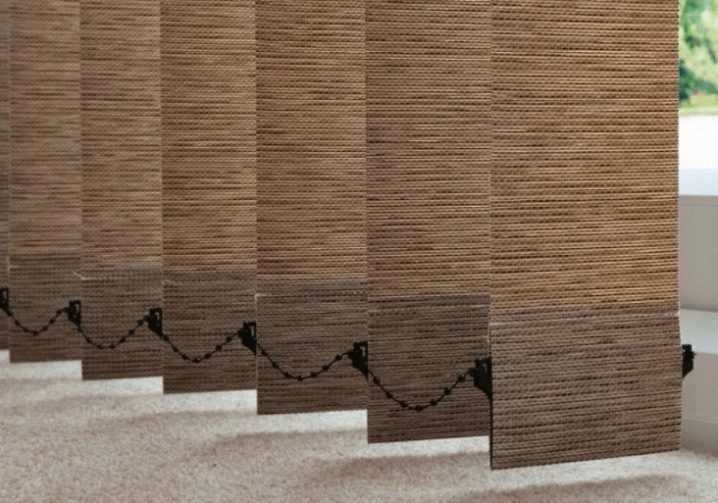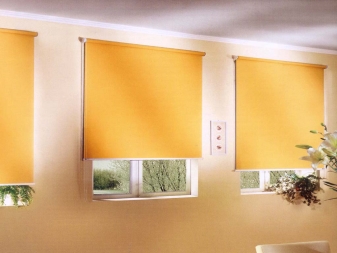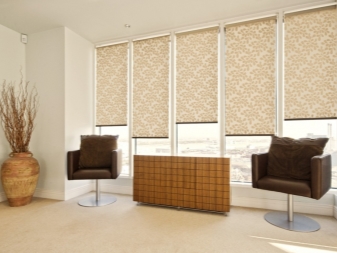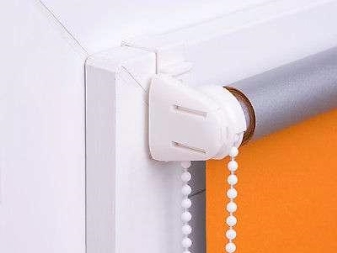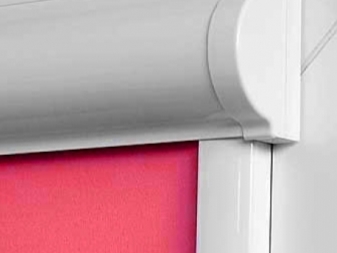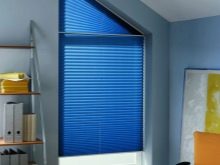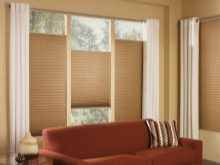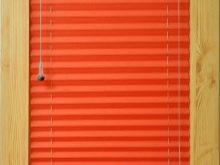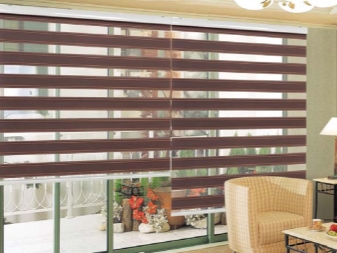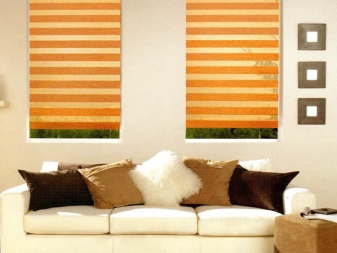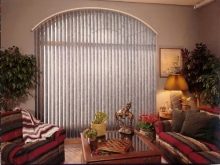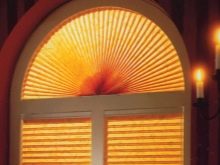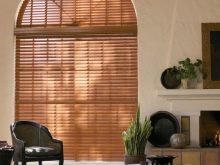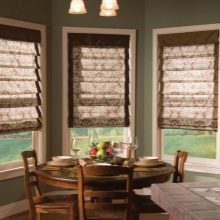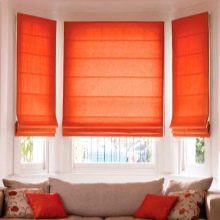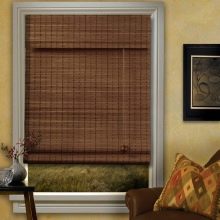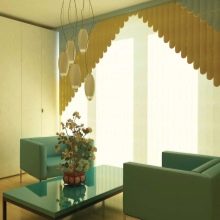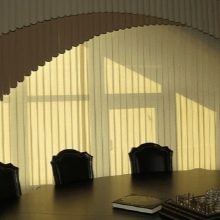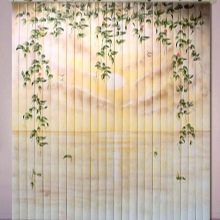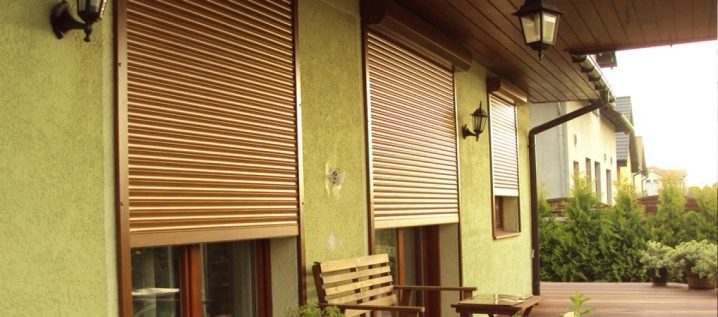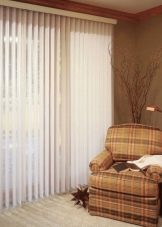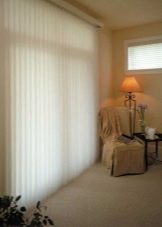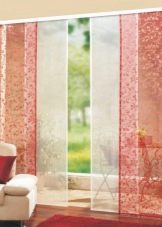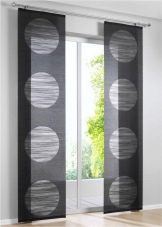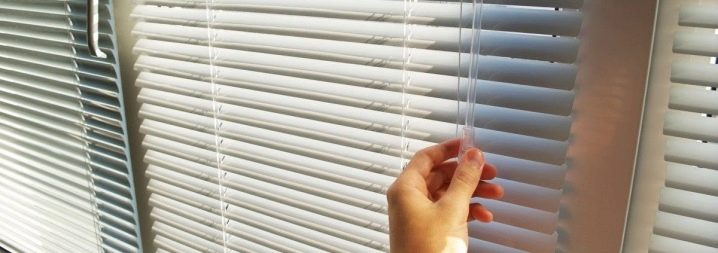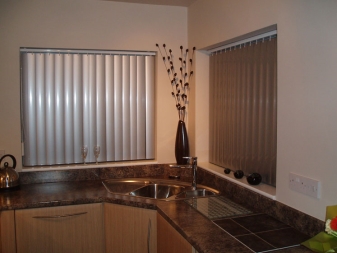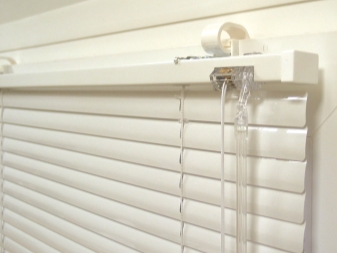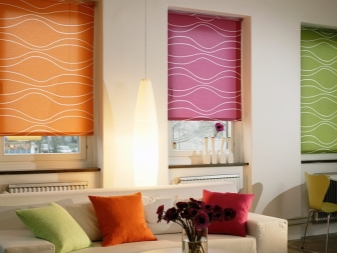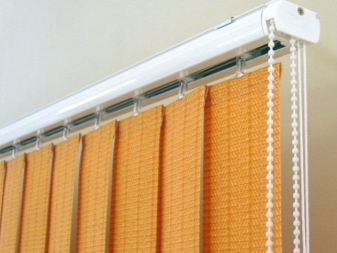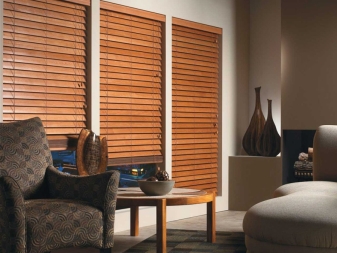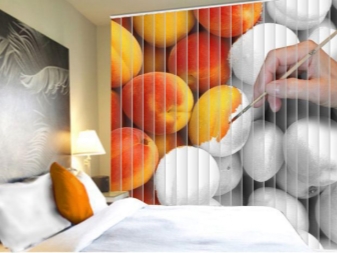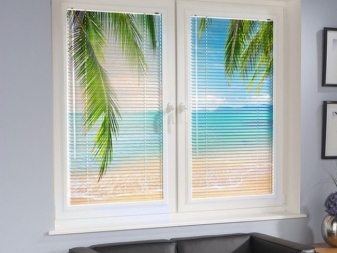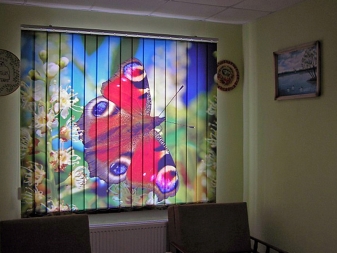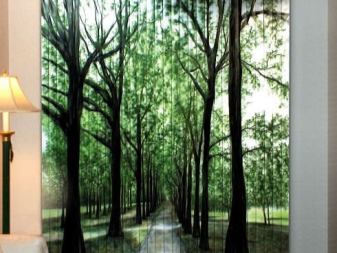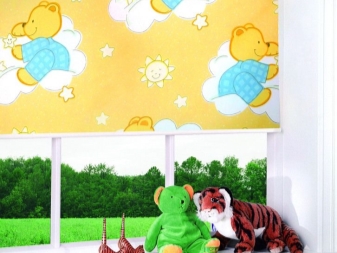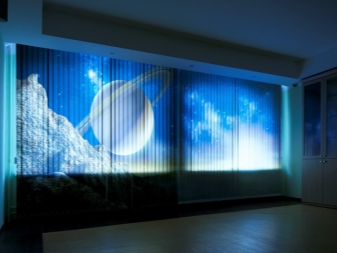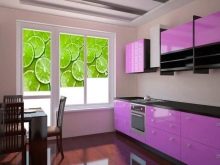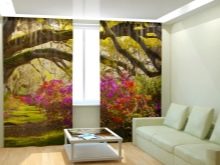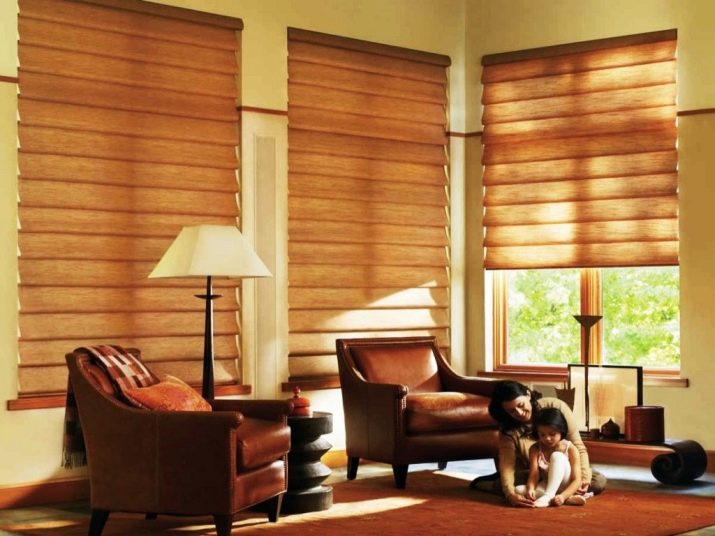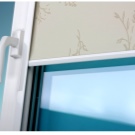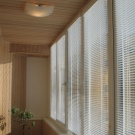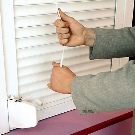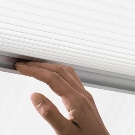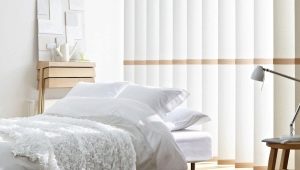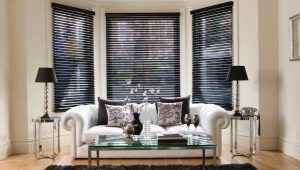Types of blinds
Blinds - a functional, beautiful and practical way to design windows. In this article we will look at all types of blinds that exist in the modern market and help you decide on their choice.
Special features
Blinds appeared a long time ago. Once, eastern men covered the windows of their houses with wooden stripes. They allowed the sunlight to pass into the room, while hiding from prying eyes what was going on inside. So husbands protected the dignity of their wives, not wearing a burqa at home. That is why the word "jalousie" means "jealousy."
Modern blinds are a set of plates, which are set in motion due to a mechanical or electronic control method. In the first case, laces or chains are used. In the second - the electric drive. This option is especially useful when windows are high.
The design fully or partially protects the room from light penetration from the outside. In comparison with usual curtains, blinds have a number of valuable advantages:
- Practicality. Blinds are unpretentious in leaving, unlike the fabric curtains needing regular washing. That is why such structures are used in almost all office spaces. In addition, conventional curtains can not completely isolate the room from the penetration of sunlight. But certain types of blinds are quite capable of it.
This advantage is especially important when watching movies, presentations and other events that require absolute darkness. It is useful during daytime sleep.
- Convenience. Electronically controlled designs allow you to adjust daylight intensity at the touch of a button.
- Style. The variety of options for blinds allows them to harmoniously fit into the interior, without getting out of the general environment. This type of window decoration is appropriate not only in the office. Today, blinds are increasingly used in modern home interiors. You can choose any color solution that can emphasize the decor of the room. And the option with a photo printing can bring a special highlight to an interior.
Design
There are several types of blinds, differing by the location of the plates, method of attachment and functional features.
Horizontal
This type is considered the classic and most popular. The basis of the design here are strips located horizontally. The elements are combined with each other part, suspended from the eaves. In the movement of their lead laces, stretched through holes located along the edge of the plates.
Such systems are installed on the inner casement window. It is also possible to attach the structure to the wall or ceiling. Installation without drilling is possible on a plastic window. For this purpose, special brackets are used.
The inter-frame placement option is very popular. It involves mounting on the eaves between the window sashes.
Horizontal blinds can be made of various materials. The color range is also extensive. A feature of horizontal designs is effect of visual expansion of space.
Vertical
This view is characterized by a vertical arrangement of lamellae. The bottom part is united by a chain. Such blinds look especially elegant. Also they visually increase the height of the room.
The design is fixed above the window opening. It is also possible to mount the system on the upper slope or ceiling.
For plastic windows, this type of design is rarely used. This is due to the fact that the elements of the system are too close to the glass. This hinders their movement.
Changing the angle of the vertical plates, you can smoothly adjust the intensity of illumination. Also vertical systems are more resistant to dust.
Fabric vertical designs are usually weighed down for greater stability. Designs made of plastic, wood or aluminum do not need it.
Rolled
This type of blinds is often called rolshtorami. They are made exclusively from fabrics. The material may have different density and texture. The strength, transparency and durability of curtains depend on it. Also, all types of fabrics in the production process undergo a special treatment with antistatic, dustproof and antibacterial effect.
The mechanism of operation of such blinds is very simple. Rising up, the canvas moves along the guides, twisting on a roller.It is possible to fix curtains at any level.
For plastic windows there are 2 separate types of similar structures:
- Mini blinds involves the installation of the system on the window sash itself with the help of fasteners.
- Cassette blinds can be made of any materials. This type of curtain is a special cassette attached to the flap into which the canvas is rolled.
Both types are suitable for both straight and inclined windows. They also allow you to open the sash with the design.
Pleated
This original version is fabric canvas assembled in "accordion". Blinds are attached to the eaves, management is carried out manually or remotely.
Pleated curtains are elegant, compact, unpretentious in care, fit perfectly into any interior. This type of louver is suitable for any windows (standard rectangular, round, triangular, arched).
Plush-type constructions are installed on the frame or the glass itself. Fastening is carried out using 2-sided adhesive tape or brackets. Allowed and installation in the pier. Curtains designed for sloping windows have special differences.Along the edges of the "accordion" are cables that exclude sagging.
"Day Night"
A fresh approach to the control of daylight has already gained great popularity. The essence of the idea is alternation of transparent and opaque stripes.
System control can be either automatic or manual. Changing the position of the elements changes the level of lighting in the room. When two opaque stripes coincide in the room it becomes darker, and the coincidence of transparent parts becomes lighter.
Zebra Blinds, as they are called, can be open type and closed (cassette). Installation is possible without drilling. In this case, the structure is mounted on a clip-grip or using foam tape.
Arched or arched
For windows in the form of arches developed a special type of blinds. Such structures are attached to the wall or ceiling. The variety can be any (horizontal, vertical or rolled). Materials are also varied.
Roman
This type of curtain is similar to pleated blinds. Instead of plates, a solid canvas is also used here. The only difference is that rising, it forms beautiful folds, and in the straightened form it can be absolutely smooth.Usually it is fabric curtains. Sometimes bamboo or straw is also used.
Multifurture
This type of blinds is the most spectacular. Vertical fabric or plastic lamellae, overlapping each other, form original multi-colored patterns.
The options are many. This bright colors and delicate shades, and matte, and pearl surfaces. You can choose either a single canvas with a pattern, or a multi-layered version imitating lambrequins. The boundless imagination of designers allows you to choose the right blinds for any interior.
Protective
Such blinds are designed for installation outside buildings. They protect the garages, windows and doors of offices and cottages. To create such structures using durable metal.
Decorative
Every day there are all new types of window decoration, combining practicality and beauty.
For example, blinds "Debut" and "Suare" represent the strips decorated with tulle fabric. No less popular Japanese curtains. These are the equal fabric panels 40-80 cm wide, fixed on the eaves.
To create such curtains often use translucent fabrics, gently scattering light throughout the room.
Materials
Plates for blinds come in various types.Depending on the material, each type has its advantages and disadvantages.
Aluminum
This material is used to make blinds quite often, and this is not accidental.
Pros:
- Aluminum plates can have any shade. The surface can be mirror-smooth or velvety, matte or sparkling. A special type of perforated blinds creates an interesting play of light and shadows.
- Aluminum curtains unpretentious in the care. Enough only once every 2-3 months to wipe them with a dry cloth. Once a year, surface treatment with a damp sponge is recommended.
- Such curtains are resistant to temperature differences. In addition, due to the excellent ability to reflect sunlight, the indoor temperature on a hot summer day will always be a few degrees lower.
Minuses:
- Due to the small thickness of the aluminum plates are not resistant to mechanical damage, they are easily bent and deformed.
- When windows are opened and planks are in contact with each other, a characteristic “lumbering” sound is heard.
Plastic
This not less popular material differs in the low price, durability and universality.
Pros:
- A variety of textures, shapes and colors makes it easy to choose the right option for any interior.
- Plastic resistant to high temperatures, can withstand any solar activity.
- The material is unpretentious in the care, allows wet cleaning.
- Plastic is more durable and resistant to mechanical stress than aluminum.
Minuses:
- Cheap low-quality plastic can quickly lose color and integrity due to constant heating (solar heat, the presence of a battery next to the window).
the cloth
This type of blinds is designed for decoration of residential premises. They create a cozier atmosphere, they can look like separate lanes, and whole canvas. Options textures and patterns are varied. The life of the product and the ability of the curtains to transmit daylight depend on the density of the fabric.
Pros:
- Extensive interior solutions.
- Fabrics are subjected to special treatment with water - and dirt-repellent effect, protection against burnout and increased durability.
Minuses:
- Such blinds require more thorough care.
- Cheap and poor-quality fabrics quickly burn out and deform.
Tree
Wooden blinds - a rare and expensive type of curtains.This is usually Canadian linden, pine, cork tree, bamboo.
Pros:
- The material is environmentally friendly and durable.
- It is highly durable, withstands temperature extremes.
- The tree looks great in any interior.
Minuses:
- Usually, wood is not painted, so the color palette of the blinds is limited to beige-brown gamut.
- The material does not withstand high humidity, allows only dry cleaning.
- Wooden products are much more expensive than aluminum, fabric and plastic counterparts.
For photo printing
Blinds with photo printing - a great way to give the interior a bright personality. Such design of windows will not only protect the room from sunlight and will allow to regulate its intensity, but will also become a stylish accent.
Modern technologies allow to apply a photo or drawing on any surface. At the same time the image does not lose saturation and clarity, does not fade, is not afraid of wet cleaning.
Usually the image is applied on vertical and roller blinds. However, today photo printing can be decorated and horizontal strips of any material. Curtains, which are a solid canvas, when rolled up only lose part of the pattern,hidden in a roll.
On blinds, consisting of a set of strips, the image looks whole only in a fully closed state. When the lamellae begin to change position, the drawing becomes blurred. But even in this form, the curtains look original and attractive.
The saturation of paints depends on the density of the material. On translucent curtains, the picture seems slightly blurry, but it is beautifully illuminated from the rays of the sun and the light of night lanterns. This gives the image a special charm and fills it with magical shine. On dense blinds the print turns out more bright and accurate.
Blinds with a pattern are used to decorate apartments, offices, salons, cafes and other premises. The main thing is to choose the right image that will harmoniously fit into the interior. and will be fully consistent with his style.
In the nursery, curtains with cartoon characters, fabulous and cosmic landscapes will be appropriate. The kitchen looks great photos of flowers, vegetables and fruits. In the bedroom or living room blinds will look spectacular with beautiful landscapes, the image of the night city, the starry sky. For the office, you can choose a panorama of the city, nature or even a company logo, emphasizing the status of the company.
How to choose?
When choosing blinds, it is important to get acquainted with the description of all the varieties and decide on a few basic points.
- Window type and mounting method. It is better to install cassette blinds or blinds with guides on plastic windows. Installation is carried out on the sash window. Fastening of such systems is possible without drilling. The best solution are brackets or double sided tape. For wooden windows fit any blinds. The choice is limited only by your taste and features of the interior. Especially organically on the frames of wood look curtains made from natural materials. On the balcony or loggia, you can install blinds, cassette or regular horizontal blinds. They will save space and provide comfort during operation.
It is also important to choose a blinds control method. Manual control requires easy access to the window. In the case of a high arrangement of windows, it is better to stay on electronic control
- Appearance. Based on the decor of the room it is important to choose the color of the blinds, the need for photo printing. It is worth remembering the difference in the design of windows for the room, kitchen, office space.
- Cost Decide in advance on the budget allocated for the purchase.It is important to understand that blinds made of wood, as well as curtains with electric control and photo printing are much higher than the standard options.
For information on how to attach blinds without drilling, see the following video.
